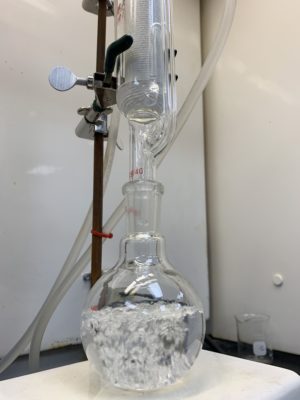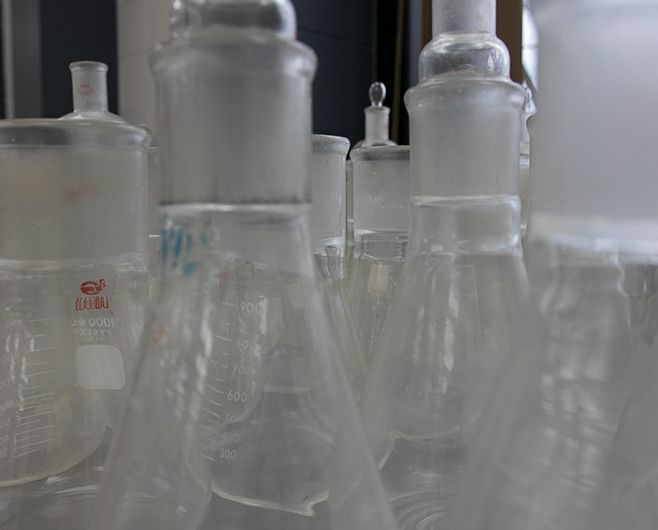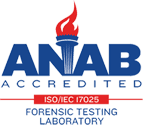Wet Chemistry

Summary
A wide range of ASTM wet chemistry analysis is available for polymers, raw materials, and other products.
Test Details
Some of the common wet chemistry tests are as follows, but not limited to:
- pH
- Soxhlet extraction
- End point titrations
What is Wet Chemistry?
Wet chemistry encompasses a wide range of ASTM tests in which the majority of analysis occurs while chemicals are in the liquid phase. Wet chemistry is a form of analytical chemistry, meaning it is concerned with the composition and structure of matter. Wet chemistry is commonly referred to as bench chemistry, since the test methods are often performed at lab benches.
During wet chemistry analysis, an ACE lab technician may measure a number of qualities. Some common qualities include conductivity, density, pH, specific gravity, and viscosity.
Wet chemistry produces data and insight into the properties of your sample material. If you are looking to understand your product more thoroughly, whether for quality control, research and development, or to meet industry standards, ACE’s high quality wet chemistry testing can help you achieve your goals.
Wet Chemistry Techniques
Wet chemistry techniques can be used for a number of purposes across a broad span of industries. At ACE, our expert lab technicians have extensive experience with wet testing. Whether you are looking to identify the presence of a specific chemical in your sample solution or determine its pH, wet chemistry analysis with ACE will bring you a more thorough understanding of your material.
Chemical Testing
During chemical testing, reagents are used to indicate the presence of a specific chemical. These reagents are used to cause a unique reaction with the present chemical. Based on the way the solution reacts, ACE can determine which chemical is present.
Soxhlet Extraction
Soxhlet extraction is typically used when a compound has limited solubility in a solvent. This test method uses a small amount of solvent to dissolve a large amount of material over the course of hours or even days. At the end, the solvent is removed using a rotary evaporator, producing the extracted compound.
Gravimetric Analysis
Gravimetric analysis testing is used to measure the weight or concentration of a solid within a liquid. This solid can have formed in the liquid from a precipitate, or it may be dissolved.
If the substance is a precipitate, ACE determines the weight by adding a reagent to stop the forming. Then, the precipitate is dried and weighed, which allows ACE to analyze the chemicals in the liquid.
If the substance is dissolved, the liquid is evaporated, which allows ACE to weigh the solids left behind.
Volumetric Analysis or Titration
This wet chemistry test uses volume measurements to determine the quantity of a chemical. ACE combines a reagent, for which the volume and concentration is known, and a solution, for which the substance and concentration is unknown. By adding the reagent to the solution, ACE can determine the amount of unknown substance.
Sometimes, no visible change occurs. In this case, ACE adds an indicator, which changes color based on the pH of the solution. Precise measurements are taken to determine the endpoint, or the exact point where the color change occurs.
Wet Chemistry Applications
Wet chemistry is used for both qualitative and quantitative chemical measurements, and is used to determine the composition of a material in liquid form.
It is often used in environmental chemistry to understand the current status of an environment, and food chemistry for safety and quality assurance purposes. In the rubber and polymer industries, wet chemistry is often used for elemental analysis, which helps identify elements such as chloride, nitrogen, and phosphate in a liquid material.

Other Industrial Chemistry Applications
Wet chemistry is considered a form of industrial chemistry. Industrial chemistry transforms matter into materials that humans use by way of chemical processes—turning rubber into tubing or tires, for example.
Aside from wet chemistry, other applications of industrial chemistry include the testing of inks, coatings and films, pharmaceuticals, health, cosmetics, household care, and electronics.
Since industrial chemistry produces outcomes often directly for human use, it is important for the safety of the end user that the materials testing process is thorough, trustworthy, and repeatable.
Wet Chemistry With ACE
If you are interested in wet chemistry testing, reach out to the experts at ACE Products and Consulting. Between our expert technicians and our ISO/IEC 17025 accredited laboratory, you can rest assured that with ACE, you are getting reliable, professional service and test results you can trust. Contact us!
There's More!
ACE offers a full range of rubber and synthetic compound testing. If you are interested in a test method that is not shown, please contact us and we will do our best to accommodate your testing needs.

